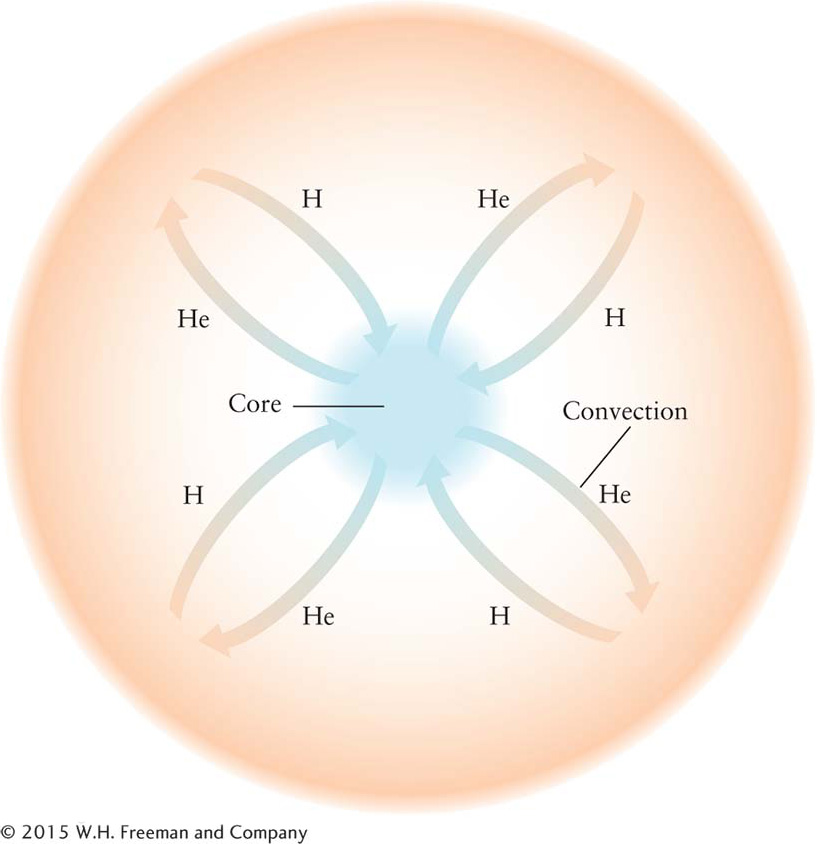EVOLUTION OF LOW MASS (0.08–0.4 M⊙) STARS
Because stars with mass less than 0.4 M⊙ and stars with mass more than 0.4 M⊙ evolve beyond the ZAMS so differently, we explore their evolutionary stages separately.
11-8 Red dwarfs convert essentially their entire mass into helium
The lowest-mass main-sequence stars, called red dwarfs, have masses between 0.08 M⊙ and 0.4 M⊙. They have the lowest core temperatures of all stars. Because fusion rates depend critically on temperature, these stars produce the least amount of energy and therefore emit the least energy; they are the dimmest of all main-sequence stars.
Red dwarfs are also different from higher-mass main-sequence stars in that the lower-mass stars transport the helium that they create out of their cores. This hot helium moves upward by convection (see Section 6-4), while cooler, denser gases from the hydrogen-rich outer layers move downward and into the core (Figure 11-19). This hydrogen is also fused into helium. As a result, these stars eventually convert their entire mass into helium. In other words, they are fully convective.

Figure 11-19 Fully Convective Star This drawing shows how the helium created in the cores of red dwarfs rises into the outer layers of the star by convection, while the hydrogen from the outer layers descends into the core. This process continues until the entire star is composed of helium.
Fusion in the cores of red dwarfs is so slow that they remain on the main sequence for trillions of years. (In comparison, the theory of solar evolution predicts that the Sun’s total lifetime on the main sequence will be about 10 billion years.) When a red dwarf has eventually converted its entire mass into helium, fusion will cease inside it because the star does not have enough pressure in its core to heat and fuse that helium into anything else. These helium bodies will then radiate the heat they generated while on the main sequence, becoming cooler and dimmer. They will move down and to the right on the H-R diagram.
We saw in Section 10-11 how there is a relationship between the masses and luminosities of main-sequence stars (for example, see Figure 10-14). Besides being the lowest-mass, dimmest main-sequence stars, red dwarfs are also the most common stars in our Galaxy, representing some 85% of all its stars. However, red dwarfs are so dim that astronomers continue to discover more of them even in our astronomical neighborhood. Red dwarfs typically form as isolated bodies surrounded with planets, unlike more massive stars, which are more apt to form in binary star systems. Because red dwarfs are the most common stars and are usually single, astronomers have recently concluded that most stars in our Galaxy are isolated, rather than binary star systems, as they thought until just a few years ago. Current calculations indicate that two-thirds of the stars in our Galaxy are isolated.
